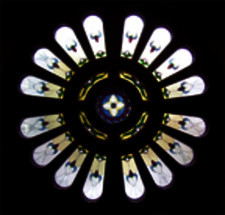Beginning in 1994 the Ministry of Education, by introducing the Quebec Education Program (QEP), began the restructuring of primary and secondary education to be responsive to the needs of students and to the technological changes that match today’s reality. This reform is currently entering Cycle 2 of the secondary system and will impact the CEGEP system beginning in fall 2010. The philosophy of the QEP represents a fundamental shift in the ways in which students learn science and mathematics.
The QEP establishes different paths depending on students’ learning preferences. These paths differ in orientation and pedagogical approach with different degrees of focus on concepts and applications. The curriculum focuses on the development of students’ competencies rather than on specific disciplinary knowledge. Students will integrate disciplinary knowledge within learning situations that require them to analyze situations, evaluate information and communicate solutions. Assessments will emphasize evaluation FOR learning and not evaluation OF learning. By evaluating student’s performance in authentic environments, these assessments will focus on the student’s attainment of the QEP competencies. These changes have been developed within the secondary school sector with very little involvement of the college sector. This can limit the effectiveness of the reform when students arrive at CEGEP and will have an impact on their college experience.

Rose Window at Dawson College
Linking People to Resources
QEMSAP (Quebec Educational Mathematics and Science Alignment Project) was formed to foster a community of practice across the secondary and CEGEP sectors. Our goal is to cultivate an environment in which educators can exchange their respective expertise to create a living curriculum. We therefore requested a meeting of Quebec educational resource providers so that they could harmonize their offerings.
Why was the meeting necessary? One reason is because we’re all publicizing teaching materials in isolation, fragmenting the treasure-trove of resources, and ignoring the reality that knowledge is a continuum. By this tunnel-vision we contribute to increasing information overload rather than to the nourishing of wisdom.
Each was committed passionately to making teaching resources available to their constituency.
As co-ordinator of QEMSAP, on Monday, February 25th, I attended this exciting meeting of people from the francophone and anglophone networks spanning both the K-11 and college sectors with representatives from La Vitrine Technologie, Learn Quebec, MELS, ProfWeb, and QEMSAP. Each was committed passionately to making teaching resources available to their constituency. We sat around a conference table with the stained glass window of Dawson College illuminating each with bright shards of colour.
It would be an address where teachers could lose themselves in the moment of creating…
What hopefully will come out of the meeting? Wouldn’t it be great if teachers from either sector could enter a portal where they could seamlessly find resources that reflected both where students had been and where they were going? It would be an address where teachers could lose themselves in the moment of creating learning objects and not be constrained to searching within a restricted sandbox using tools defined by others.
Use our Reader Response Feature to share your views on how to shape the environments we use to create our teaching materials. How can we make time and space to attend to the educational system as a whole and not only to our small corner? In the middle of the information explosion, how do we remain connected?

